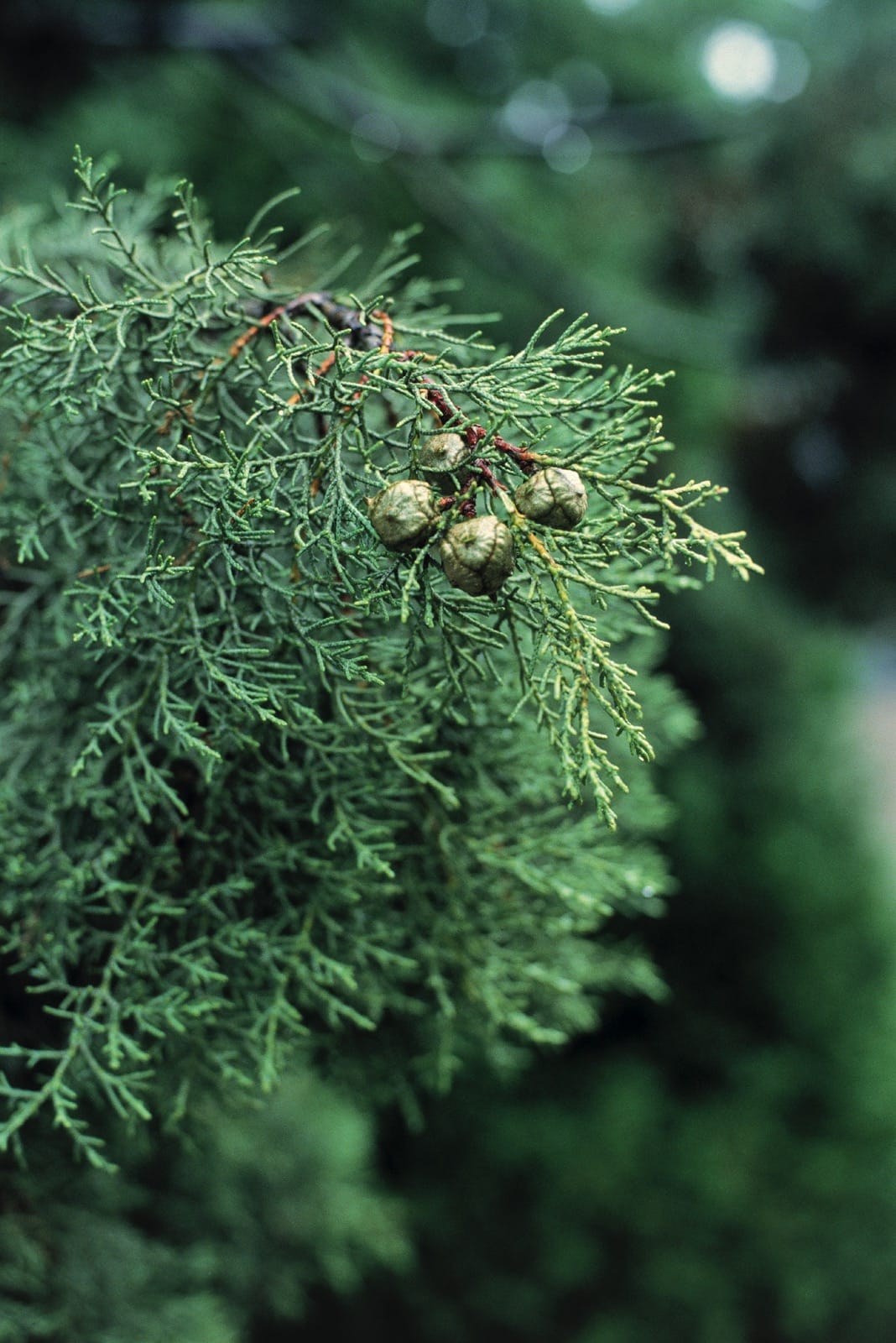Cupressus bakeri
Credits
Article from New Trees by John Grimshaw & Ross Bayton
Recommended citation
'Cupressus bakeri' from the website Trees and Shrubs Online (treesandshrubsonline.
Genus
Common Names
- Baker Cypress
- Modoc Cypress
- Siskiyou Cypress
Synonyms
- C. bakeri subsp. matthewsii C.B. Wolf
Other taxa in genus
- Cupressus arizonica
- Cupressus austrotibetica
- Cupressus cashmeriana
- Cupressus chengiana
- Cupressus corneyana
- Cupressus duclouxiana
- Cupressus dupreziana
- Cupressus forbesii
- Cupressus funebris
- Cupressus gigantea
- Cupressus goveniana
- Cupressus himalaica
- Cupressus lusitanica
- Cupressus macnabiana
- Cupressus macrocarpa
- Cupressus sargentii
- Cupressus sempervirens
- Cupressus torulosa
Tree to 30 m, trunk slender, to 0.6(–1) m dbh. Bark smooth and reddish brown, later grey with multiple layers to a thickness of 2 cm; plates curling upwards at the edges. Crown narrow and conical, sparse. Branchlets decussate or alternate, slender; branches that persist beyond the first year shed their leaves by expansion of the bark, which pushes the leaves off. Juvenile leaves needle-like; mature leaves scale-like, glaucous-green, decussate, appressed, densely crowded; the lateral and facial pairs are similar, 2(–10) × 1–4 mm, apex abruptly constricted; leaf resin gland abaxial, conspicuous and active, pit-like. Male strobili solitary and terminal, borne on short, lateral branches, 2–3 × 2–2.5 mm, subglobose, with 6–10 peltate microsporophylls. Female cones axillary, usually solitary, globose, valvate and 1–2 cm long, initially green though silvery (not glaucous) at maturity. Seed scales in three to four decussate pairs, valvate, covered with resin blisters, 8–10 seeds per scale; umbo prominent, in distal scales to 4 mm long and erect, often eroding in time. Seeds medium brown or tan, thin and angular, not or slightly glaucous; seed wings absent. Watson & Eckenwalder 1993, Farjon 2005c. Distribution USA: northern California, southern Oregon. Habitat Mixed evergreen forest between 1100 and 2000 m asl. Cupressus bakeri is largely confined to volcanic or serpentine soils. USDA Hardiness Zone 6. Conservation status Vulnerable. Illustration NT294. Cross-references B805, K105.
With its origin at comparatively northerly latitude and high altitude, Cupressus bakeri is considered to be the hardiest American cypress (Rushforth 1987a, van Gelderen & van Hoey Smith 1996), and in Poland it is viewed as being the hardiest of all Cupressus (P. Banaszczak, pers. comm. 2007). Two subspecific taxa were formerly recognised, but Farjon (2001, 2005c) considers that the Siskiyou population, described as subsp. matthewsii on the basis of small cone characters, does not warrant recognition. The name, however, remains frequent in literature and on arboretum labels. In the wild, trees in the Siskiyou population (‘subsp. matthewsii’) on serpentine rock grow much taller (to 30 m) than do those of the nominate ‘subsp. bakeri’ growing on lava flows in northern California. In cultivation, this almost certainly habitat-induced distinction seems irrelevant, with C. bakeri from both sources performing well. Several are in the 14–15 m range, both at the Sir Harold Hillier Gardens – including the recognised champion (Johnson 2003) – and at Kew. Young plants at Howick are also growing very well. Trees from a collection made in Shasta County, California in 1990 are now 5 m tall at Rogów Arboretum (P. Banaszczak, pers. comm. 2007).
The most attractive feature of C. bakeri is its shiny reddish to dark brown bark, which peels off in large curled flakes. When young the tree forms a dense column of bluish sage-green shoots, but with age it opens out, developing spreading branches and a more open habit.

